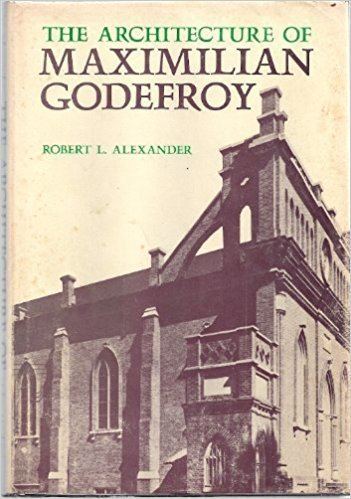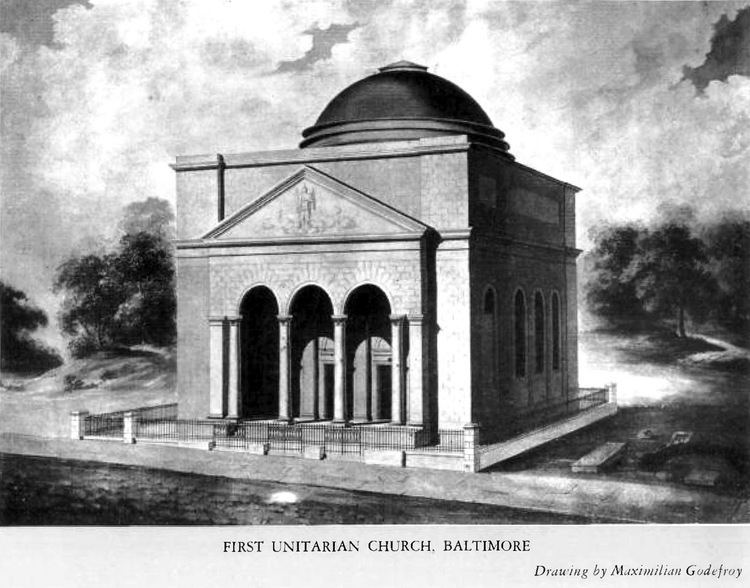Name Maximilian Godefroy Role Architect | Died 1840 | |
 | ||
Structures | ||
Carriage Gates of Westminster Burying Ground
J. Maximilian M. Godefroy (1765 – circa 1838) was a French-American architect. Godefroy was born in France and educated as a geographical/civil engineer. During the French Revolution he fought briefly on the Royalist side. Later, as an anti-Bonaparte activist, he was imprisoned in the fortress of Bellegarde and Chateau D'if then released about 1805 and allowed to come to the United States, settling in Baltimore, Maryland, where he became an instructor in drawing, art and military science at St. Mary's College, the Sulpician Seminary. By 1808, Godefroy had married Eliza Crawford Anderson, editor of her own periodical, the Observer and the niece of a wealthy Baltimore merchant.
Contents

While in Baltimore, he designed a number of important and famous structures including the St. Mary's Seminary Chapel, (part of the group of academic buildings now demolished 1970 for a park) of St. Mary's Seminary and College along St. Mary's and Orchard Streets in the Seton Hill neighborhood in the northwest city, the Battle Monument, in the old Courthouse Square of the central city (for the defenders and casualties of the British bombardment of Fort McHenry and the Battle of North Point in September 1814, at North Calvert Street, between East Lexington and Fayette Streets, and the First Independent Church of Baltimore (later known as "Unitarian and Universalist" by 1935, at North Charles and West Franklin Streets - in the Mount Vernon-Belvedere neighborhood). Other projects included the Commercial and Farmers Bank (now demolished), as well as the iron gates and monuments in the burial grounds beneath the Westminster Presbyterian Church (at North Greene and West Fayette Streets), the "sally port" (gatehouse) at Fort McHenry, as well as submitting plans for the 1815 design competition for the Washington Monument to be built in Baltimore. Godefroy became acquainted with well-known British-American architect Benjamin Henry Latrobe, (1764-1820), and married Eliza Crawford Anderson, whose father, Dr. John Crawford, was one of the founders of the College of Medicine of Maryland. However, while working with Latrobe on the "Baltimore Merchant's Exchange" (demolished to make way for the new U.S. Custom House in 1902), Godefroy and Latrobe fell out and dissolved the partnership. Latrobe was to have contributed the overall design, while Godefroy was to execute the drawings and supervise construction. Godefroy changed the plans to reflect his own ideas. After parting company, Latrobe continued to credit Godefroy with the design for the front of the Exchange, and did not compete with him for the plans to design the new First Independent Church (Unitarians). Godefroy, however, blamed Latrobe for his inability to obtain further work in Baltimore.
Godefroy left Baltimore in 1819 for England, his daughter dying of yellow fever before the ship had cleared Chesapeake Bay. He worked for a while in London, then moved on to France. Prior to his death in 1838/40?, he designed a new wing to the Palais de Justice and the Préfecture, both at Laval, Mayenne, France.
